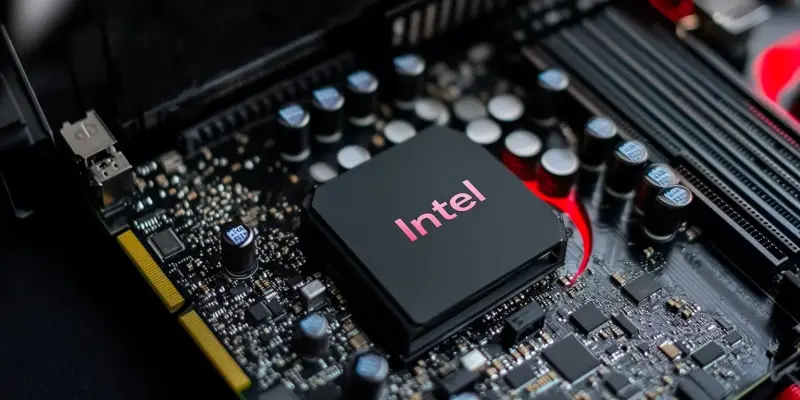Intel’s Arc B580 graphics card, initially celebrated for its value and performance, has encountered significant problems when paired with CPUs older than five years, leading to stuttering and low frame rates in several demanding games. Research and extensive testing conducted by prominent tech reviewers have revealed these issues, indicating potential limitations in the GPU’s architecture or drivers. This article delves into the detailed findings from various tests and examines the implications for gamers and hardware enthusiasts.
The Harsh Reality of Performance Drops
Severe Performance Degradation in Demanding Titles
Notably, Hardware Canucks and Hardware Unboxed carried out extensive testing to uncover how the Intel Arc B580 performs when coupled with older CPUs. Their analyses brought to light troubling performance drops, making some games nearly unplayable. In particular, pairing the Arc B580 with an Intel Core i5-9600K led to choppy gameplay and erratic frame rates in titles such as Marvel’s Spider-Man Remastered and Starfield. Similarly, Hardware Unboxed found that the AMD Ryzen 5 2600X faced significant performance issues, with games like Warhammer 40,000: Space Marine 2 and Hogwarts Legacy experiencing frame rate reductions of up to 46 percent compared to NVIDIA’s RTX 4060.
The testing highlighted a pattern where older CPUs failed to handle the Arc B580’s demands efficiently. This raises concerns about the graphics card’s compatibility and overall performance in varied gaming scenarios. For gamers who rely on older processors, these findings are particularly alarming, as the cost and effort to upgrade their systems might outweigh the perceived benefits of adopting the Intel Arc B580. Moreover, the significant performance degradation observed in specific titles suggests that the problems may be specific to certain game engines or graphical requirements.
The Role of ReBAR and SAM Support
A consistent theme throughout the testing was the importance of Resizable BAR (ReBAR) and Smart Access Memory (SAM) support, which are necessary for optimal performance of modern GPUs. Intel recommends that its 10th-gen or newer Core CPUs and AMD Ryzen 3000 series or newer support these technologies to maximize the B580’s potential. Despite older systems having ReBAR backported and enabled, the performance issues persisted, indicating the likelihood of deeper problems rooted in the GPU’s architecture or its drivers.
Without ReBAR and SAM, the Arc B580 struggles to deliver a smooth gaming experience with older processors, suggesting a necessity for these features to harness the GPU’s full capabilities. The findings indicate that while enabling ReBAR may help, it is not a panacea for the compatibility issues experienced with older CPUs. This scenario underscores the evolving landscape of hardware compatibility, where gamers must now consider a combination of both CPU and GPU advancements to ensure a seamless gaming experience.
Path Forward for Optimal Gameplay
Identifying Playable Scenarios
While the B580 showed considerable performance drops with older CPUs in some demanding games, it performed relatively well in other titles, even with older processors. Games like Alan Wake 2, Doom Eternal, and Horizon: Forbidden West managed to maintain playable frame rates, suggesting that not all games are adversely affected. This selective compatibility points to variations in game engine demands or optimizations that might be influencing the B580’s performance.
The variance in game compatibility implies that users with older CPUs may still find value in the B580 for less demanding or better-optimized titles. However, this comes with the caveat that performance can be inconsistent and less predictable compared to more modern GPU-CPU pairings. As such, gamers need to research and possibly test specific titles to understand the Arc B580’s performance characteristics fully.
Intel’s Ongoing Investigations and Future Updates
Intel’s Arc B580 graphics card, initially hailed for its impressive value and performance, has run into significant issues when used with CPUs older than five years. Users have reported stuttering and low frame rates in several demanding games, which has raised concerns within the gaming community. Extensive testing and research by well-known tech reviewers have highlighted these problems, suggesting that there may be inherent limitations within the GPU’s architecture or its drivers. This article investigates the results from a series of detailed tests and explores the broader implications for gamers and hardware enthusiasts who were initially excited about this promising new graphics card. Moreover, it also discusses potential solutions and workarounds that could alleviate these performance issues. Insights from industry experts indicate that while the card may still be a worthwhile investment for users with newer CPUs, those with older systems might need to consider alternative options or await possible updates that could address these compatibility concerns.

